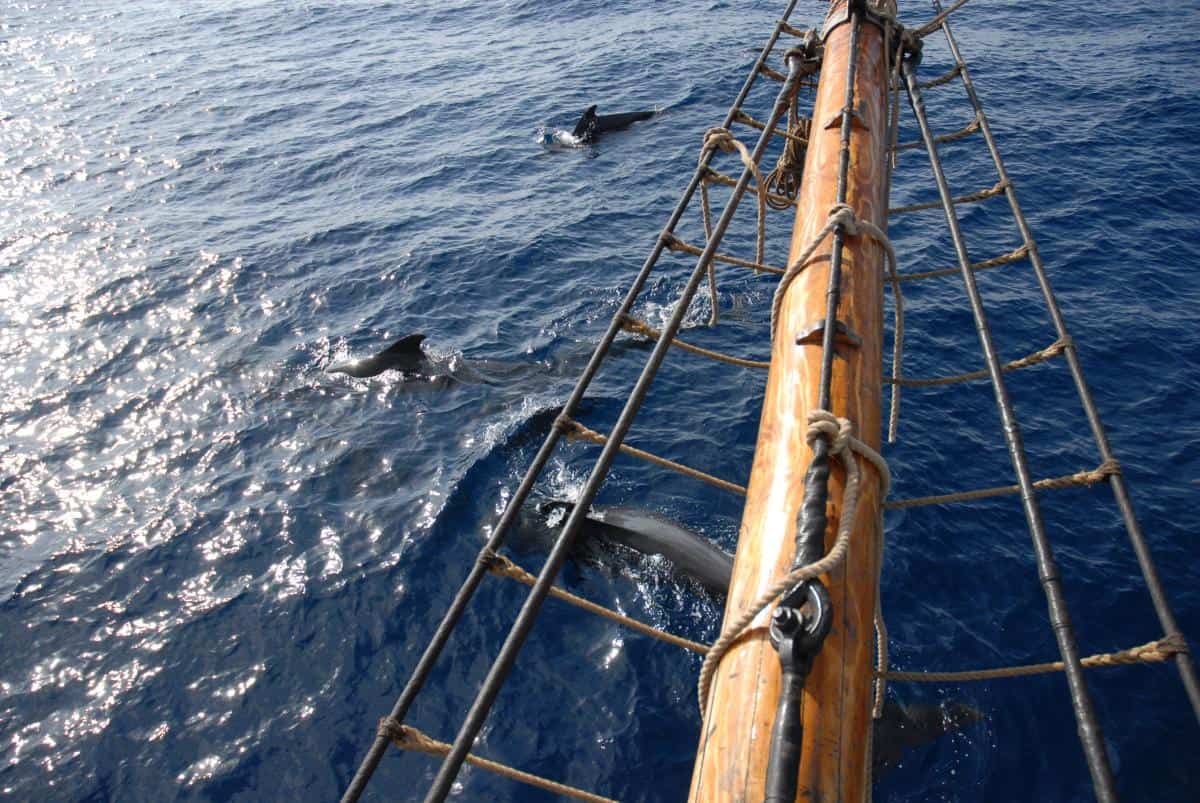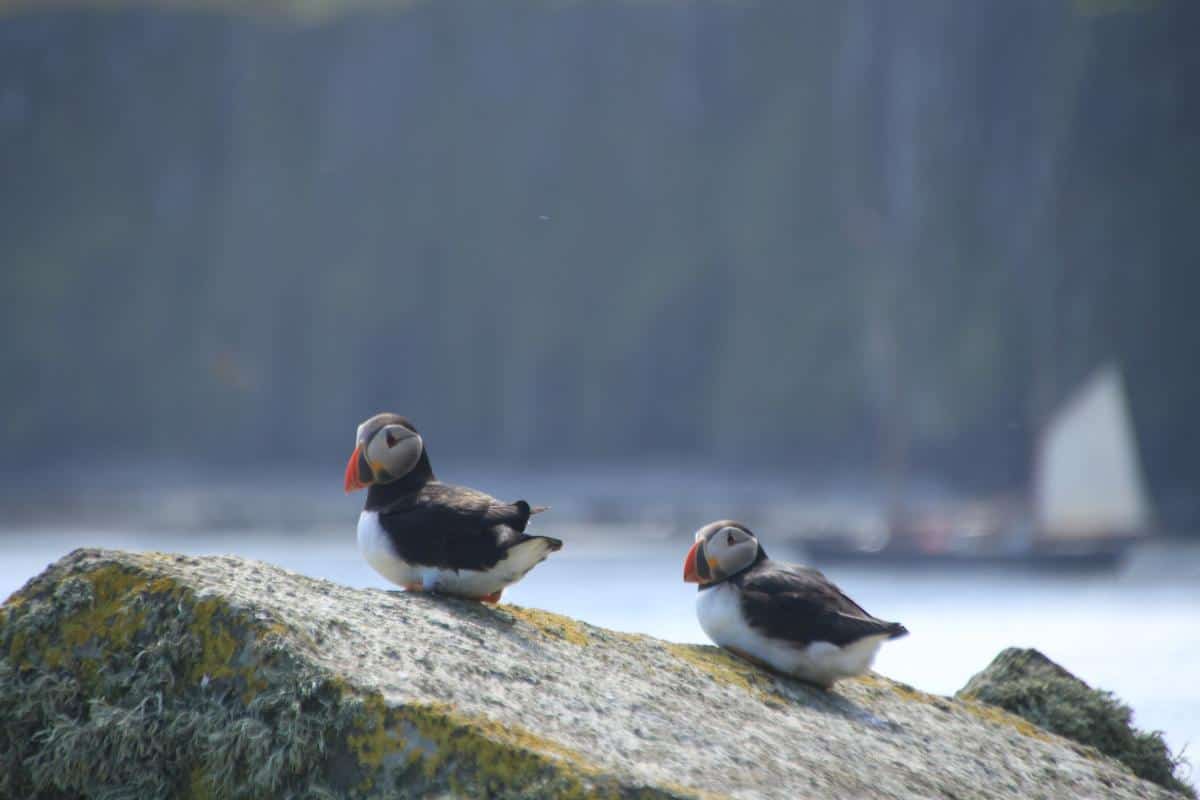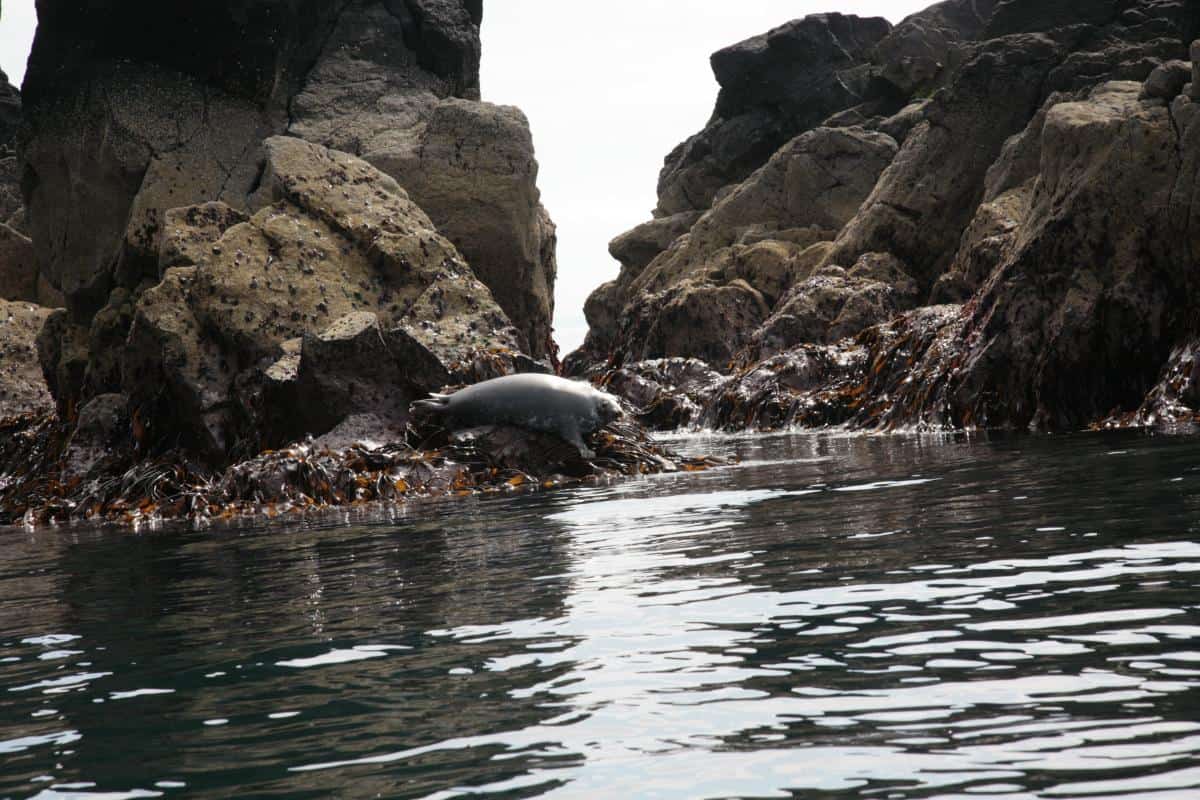Cetaceans – Whales in Scotland
Whale Watching in the Western Isles
The waters off Scotland’s west coast are shaped by powerful ocean currents, where the warm Gulf Stream mixes with the cold, nutrient-rich waters of the North Atlantic. This collision of temperatures fuels a marine ecosystem rich in plankton—the foundation of the food chain that draws whales and other wildlife to the area from late spring through summer. For those sailing the Western Isles, it’s one of the best places in the UK to see these giants of the sea.
Between the Outer and Inner Hebrides, Minke whales are a common sight, their sleek bodies breaking the surface as they feed in the tidal currents. An orca sighting is rarer, but not impossible—there’s a pod frequently spotted off Mallaig and at the entrance to Loch Nevis, no doubt making the most of the Scottish fishing fleet to round up their supper. Further north, the deep waters between Skye, Raasay, and the Applecross Peninsula provide perfect hunting grounds for these apex predators.
The luckiest sailors may witness the breathtaking sight of a humpback whale lifting its massive tail skyward before making an elegant descent into the depths.
Closer to Oban, the entire Firth of Lorn has been designated a Special Area of Conservation, home to a vast array of marine and land-based wildlife. Further south, the infamous Gulf of Corryvreckan—with its raging tides and spectacular whirlpools—creates a rich feeding ground for whales. Watch for them surfacing to breathe before diving once more in search of food.
Beyond Corryvreckan, out in deeper waters, lies the Great Race—an offshore tidal stream teeming with marine life. Here, you might spot whales passing through, including orca venturing down from the Hebrides, and if fortune is on your side, perhaps even the elusive humpback.

Cetaceans – Dolphins in Scotland
Bottlenose Dolphin are the commonest dolphins to be seen in Scotland.
Did you know Scottish bottlenose dolphins are considerably larger than their cousins living in the warmer waters off Florida, USA? Bottlenose Dolphins can be between 3 and 4 metres in length and are often seen in pods (groups) of up to ten animals. These pods can form to make much larger groups at times with amazing displays.
Bottlenose dolphins are grey in colouring, with a pale, almost white underside, of course the colours of individuals vary and markings or scars on their heads can enable you to recognize a dolphin quite quickly. The upper body varies from dark grey to grey brown and on the underside from light grey to white. The lower jaw is very distinctive as it extends out further than the upper jaw.
Bottlenose Dolphin are active, playful and can be seen jumping up out of the water (breaching) and swimming at up to 20mph when hunting in a real spectacle you will always remember. Bottlenose Dolphin eat fish, such as Atlantic salmon and anything else of a suitable size.

Basking Sharks
The Basking shark (Cetorhinus maximus) is the biggest fish in Scotland and the second largest fish in the entire world. They can grow over 10m (33ft) long and weigh up to several tonnes! They can have a huge mouth which can be up to 1 metre wide on a full y grown basking shark, thankfully for humans they only eat tiny plankton. They feed by filtering on plankton by sieving out the minuscule animals from the water using special gill rakers. The rakers are specially evolved bones which sit in the gills and act in a similar way to the baleen in filter-feeding whales. They can filter up to 1.5 million litres of water per hour. But when you consider that they are up to 10m long and eat things smaller than a grain of rice – you need to do a lot of sucking!
The sharks are mainly here in the Western Isles in summer but some have been seen in the winter. Generally the best time to be to see them is May-September, with peak season between June-August. The main hotspot to spot Basking sharks is the Hebrides on the west coast where the vast majority of sightings come from. Look out for what appears to be two fins fairly close together, the front one is the top of the mouth which looks a bit like a nose.

Birdlife – More than Eagles and Puffins
You don’t have to be “twitcher” to enjoy the splendor of bird watching at sea.
We try to ensure that all our vessels have good reference books onboard to help you identify the birds and sea life around you. The more you see and recognise the more interesting it becomes. On many voyages you will find a keen ornithologist either amongst the crew or the guests.
Any voyage in the Western Isles of Scotland can show up whole selection of birds, Shearwaters, in deed auks of many kinds, White Tailed Sea Eagles, and rarest of all the Golden Eagle, Puffin, Gannets, Gulls, Shags, Cormorants, fulmar, skuas, black guillemots and Terns
To watch a huge flock of Gannets diving on a shoal of fish is one the most awesome experiences to witness at sea.
TOP TIPS
“Shags and Cormorants are difficult to tell one from the other, it does not help that Cormorants are bigger than Shags as unless you see them together and you are not looking at different ages you still have a problem identifying them. In general Cormorants have a lighter brown patch under their neck and body.
But here are some other clues, Shags will raft up in groups up to 100’s in number. The sight of a raft of shags relocating to a different place is amazing, the ones under water seem to emerge from the sea straight into flight. Like Phoenix arising…..” Adam Purser
The islands of Rum and Canna seem to be very good for spotting Sea Eagles. We have also seen them in the Shiant Isles and Golden Eagles off Mull.
Wild Ravens are common in the Western Isles and their deep cawing is a pleasure to hear. Hooded crows are common too.
St Kilda is a bird watchers paradise. There are over a million birds in the island group. There are huge colonies of Gannets and Puffins. It even has its own thrush.

Wildlife on the Shore
Other common sights include otters that like to forage at the water’s edge, seals that can be seen lounging about on the rocks or bobbing up and down out in the water, deer and feral goats that haunt the craggy island hillsides.




